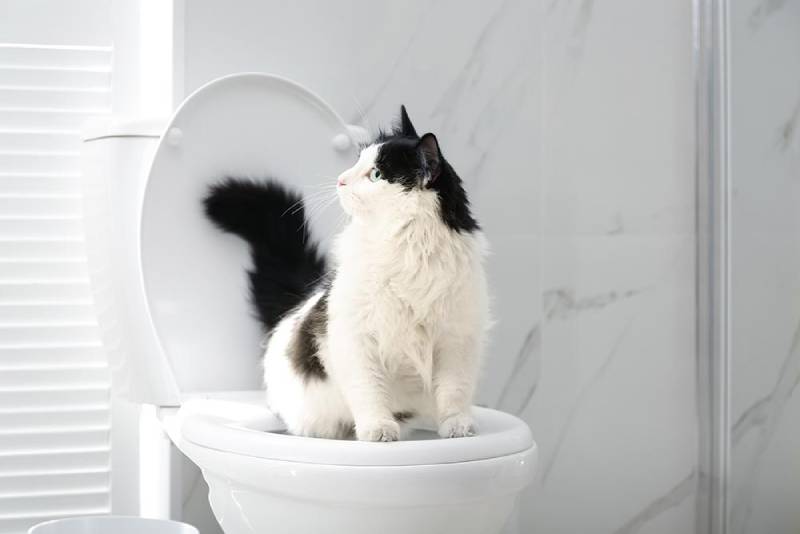The content below on the subject of How to Dispose of Cat Poop and Litter Without Plastic Bags is really captivating. Read on and make your own final thoughts.

Intro
As cat owners, it's vital to be mindful of how we throw away our feline friends' waste. While it may seem practical to purge pet cat poop down the toilet, this method can have damaging effects for both the environment and human health.
Alternatives to Flushing
Luckily, there are more secure and extra responsible ways to get rid of feline poop. Take into consideration the adhering to alternatives:
1. Scoop and Dispose in Trash
The most common method of getting rid of feline poop is to scoop it right into an eco-friendly bag and toss it in the garbage. Make certain to make use of a committed clutter inside story and take care of the waste promptly.
2. Usage Biodegradable Litter
Opt for biodegradable pet cat clutter made from products such as corn or wheat. These litters are eco-friendly and can be securely taken care of in the garbage.
3. Hide in the Yard
If you have a backyard, think about burying feline waste in a marked area far from vegetable yards and water resources. Make certain to dig deep enough to prevent contamination of groundwater.
4. Mount a Pet Waste Disposal System
Invest in a family pet garbage disposal system especially developed for feline waste. These systems utilize enzymes to break down the waste, minimizing odor and ecological impact.
Wellness Risks
Along with environmental concerns, purging pet cat waste can also pose health threats to people. Feline feces might have Toxoplasma gondii, a bloodsucker that can cause toxoplasmosis-- a potentially extreme disease, especially for expecting women and individuals with damaged immune systems.
Environmental Impact
Purging feline poop presents harmful microorganisms and bloodsuckers right into the water, posturing a significant threat to aquatic environments. These pollutants can negatively impact marine life and concession water top quality.
Verdict
Accountable family pet ownership extends past providing food and sanctuary-- it likewise involves proper waste management. By avoiding purging cat poop down the commode and selecting alternate disposal techniques, we can lessen our environmental footprint and protect human wellness.
Why Can’t I Flush Cat Poop?
It Spreads a Parasite
Cats are frequently infected with a parasite called toxoplasma gondii. The parasite causes an infection called toxoplasmosis. It is usually harmless to cats. The parasite only uses cat poop as a host for its eggs. Otherwise, the cat’s immune system usually keeps the infection at low enough levels to maintain its own health. But it does not stop the develop of eggs. These eggs are tiny and surprisingly tough. They may survive for a year before they begin to grow. But that’s the problem.
Our wastewater system is not designed to deal with toxoplasmosis eggs. Instead, most eggs will flush from your toilet into sewers and wastewater management plants. After the sewage is treated for many other harmful things in it, it is typically released into local rivers, lakes, or oceans. Here, the toxoplasmosis eggs can find new hosts, including starfish, crabs, otters, and many other wildlife. For many, this is a significant risk to their health. Toxoplasmosis can also end up infecting water sources that are important for agriculture, which means our deer, pigs, and sheep can get infected too.
Is There Risk to Humans?
There can be a risk to human life from flushing cat poop down the toilet. If you do so, the parasites from your cat’s poop can end up in shellfish, game animals, or livestock. If this meat is then served raw or undercooked, the people who eat it can get sick.
In fact, according to the CDC, 40 million people in the United States are infected with toxoplasma gondii. They get it from exposure to infected seafood, or from some kind of cat poop contamination, like drinking from a stream that is contaminated or touching anything that has come into contact with cat poop. That includes just cleaning a cat litter box.
Most people who get infected with these parasites will not develop any symptoms. However, for pregnant women or for those with compromised immune systems, the parasite can cause severe health problems.
How to Handle Cat Poop
The best way to handle cat poop is actually to clean the box more often. The eggs that the parasite sheds will not become active until one to five days after the cat poops. That means that if you clean daily, you’re much less likely to come into direct contact with infectious eggs.
That said, always dispose of cat poop in the garbage and not down the toilet. Wash your hands before and after you clean the litter box, and bring the bag of poop right outside to your garbage bins.
https://trenchlesssolutionsusa.com/why-cant-i-flush-cat-poop/

As an avid reader about Can You Flush Cat Poo or Litter Down the Toilet?, I think sharing that piece of content was beneficial. I beg you take the time to distribute this post if you appreciated it. Thanks for your time. Don't forget to visit our site back soon.
Visit Website